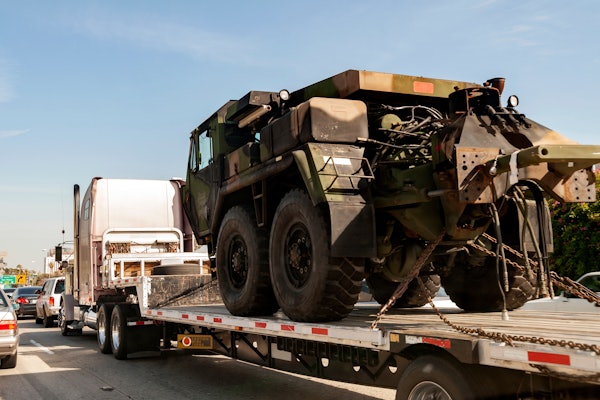While the industry braces for implementation of the new hours-of-service rules beginning Jan. 4, the agency that drafted the revised regulations is moving on to new challenges. Private fleet executives who braved Hurricane Isabel in mid-September heard a comprehensive briefing from the Federal Motor Carrier Safety Administration’s No. 2 official.
“We function to look at the data and rid the highways of those who are unsafe or choose to disobey the law,” said Warren Hoemann, FMCSA’s deputy administrator at the National Private Truck Council’s first National Safety and Security Conference in Herndon, Va.
FMCSA hopes to have more resources with which to fulfill that mission. The agency is currently operating under a short-term authorization act, which extended highway development and safety programs through February to give Congress time to draft and reconcile a long-term highway bill. Under the next highway bill, which the Department of Transportation calls the Safe, Accountable, Flexible and Efficient Transportation Equity Act of 2003, or SAFETEA, FMCSA hopes to double overall highway safety funds, Hoemann said. The agency envisions $164 million for the Motor Carrier Safety Assistance Program and more flexibility in targeting enforcement efforts.
“The budget for CDL improvements will be $22 to $25 million per year over six years, an $11 million increase,” Hoemann said. There will also be $32 million for border enforcement.
“Safety performance of a fleet will be tied to vehicle registration,” Hoemann said. “The effort is aimed at demonstrably unsafe carriers. Those with an unsatisfactory safety rating will be refused registration, taking them off the road so you will be safer.”
DOT is pushing for flexibility in use of MCSAP funds, Hoemann told private fleet executives. “We are also asking that Congress give us the ability to use MCSAP funds for both trucks and those around trucks. Seventy percent of accidents start with the car driver-these are consistent numbers. We can’t just look at commercial vehicles, but must also look at the interaction,” he said.
FMCSA also is seeking authority from Congress to look at both interstate and intrastate operations during compliance reviews. “We and the state should be able to shut down either intrastate or interstate operations. If your trucks are in accidents caused by unsafe operators, do you care if they are an interstate or an intrastate operator? And, we are asking for the authority to be able to follow managers who show an extreme disregard for safety regulations,” Hoemann said. So, a manager who continues to cheat on the rules no matter where he works will be identified and removed.
Current programs at FMCSA include a careful look at seatbelt use among commercial drivers, Hoemann said. While belt use is on the increase, survelliance reveals that only about 48 percent of truck drivers are belted up when rolling down the road, he said. This doesn’t show up in checks at weigh stations or roadside inspection sites because drivers often buckle up before being interviewed by an inspector.
“Major fleets – the responsible carriers – had a much higher compliance rate than that,” Hoemann said. Still, the statistical result, he claims, is that 40 truck drivers per year lose their lives because they are not buckled up. The belt is critical in saving the driver in the event of a rollover and preventing ejection from the cab.
Hoemann also spoke to a sense of pragmatism and cooperation within DOT and its agencies. “There is a breath of fresh air at DOT.” Hoemann noted, for example, that DOT officials are more realistic about the prospects for safety improvements. “Secretary Mineta has redefined the safety goal for trucks,” Hoemann says. The goal is one fatal per 100 million miles versus about 1.65 per 100 million miles now. Previously, DOT had established a 50 percent drop in fatalities involving large trucks. But that goal is no longer reasonable, Hoemann said, “because truck exposure is now rising much faster than car exposure.”
Hoemann also contends that there is more cooperation among FMCSA, the National Highway Traffic Safety Administration and the Federal Highway Administration than in the past. “We will deal with infrastructure problems, and create practical vehicle solutions,” he said. “NHTSA people talk to us because we know trucking.”








